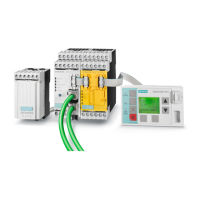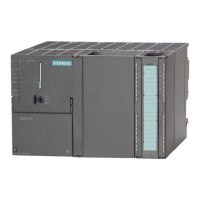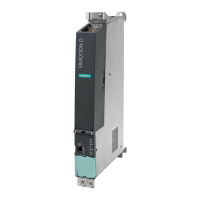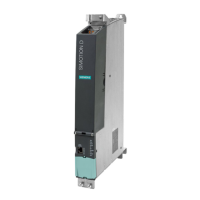Glossary
SIMOCODE pro
Glossary-2 GWA 4NEB 631 6050-22 DS 03
Baud rate
The baud rate is the speed at which data is transferred and
indicates the number of transmitted bits per second (baud
rate = bit rate).
With PROFIBUS DP, baud rates from 9.6 kBaud to 12 MBaud
are possible.
Bus
A common transmission path with which all stations are
connected. It has two defined ends.
With PROFIBUS, the bus is a two-wire cable (copper cable) or
a fiber optic cable.
Bus segment
PROFIBUS DP consists of at least one bus segment. A bus
segment has at least two stations, one of which must be a
DP master. A maximum of 32 stations can be connected to a
bus segment.
Cascade input
Safe single-channel input of a safety relay, e.g. DM-F Local
and DM-F PROFIsafe. This input is evaluated internally as a
sensor signal. If no voltage is applied the safety relay trips the
enabling circuits (outputs) safely.
Class
Unit for the tripping class. Indicates the maximum tripping
time in which SIMOCODE must trip at a current that is 7.2
times the value of the set current I
s
in a cold state (motor
protection according to IEC 60947). If Class 10 is set for
SIMOCODE pro (for example), it is ensured that if a current
that is 7.2 times the set current occurs
the (cold) motor will switch off after 10 seconds. The tripping
class can be set to 8 different settings ranging from Class 5
to Class 40.
Class 1 master
Active stations on PROFIBUS DP. The cyclic data exchange
with other stations is characteristic for this type of master.
Typical class 1 masters are, for example, PLCs with a
PROFIBUS DP connection.
Class 2 master
Optional stations on PROFIBUS DP.
Typical class 2 masters are, for example,
• PC/PD devices with the "SIMOCODE ES" software
•PDM (PCS7)
• PC with "SIMARIS manager" software (power
management).
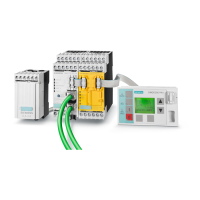
